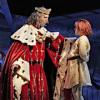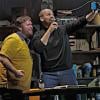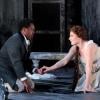
For its 2023 season, Santa Fe Opera programmed five operas full of mystery, monsters, and the supernatural. Apart from Tosca, which I didn’t see, where the only monster is a human, there were Greek gods, water sprites, ghostly seafarers, and a castle by the sea that isn’t haunted but feels that way. Water could also have been one of the season’s themes, appropriate for the open-air Crosby Theatre. In fact, from the stormy sea of Richard Wagner’s The Flying Dutchman to the implied river Styx in Claudio Monteverdi’s Orfeo to the fountains, seas, and cisterns of Claude Debussy’s Pélleas et Mélisande to the wetlands or rivers inhabited by the nymphs of Antonín Dvořák’s Rusalka, water was everywhere.
Director David Alden set his Flying Dutchman sometime in the modern day, perhaps the 1950s, perhaps later. During the overture, a young girl (Amelia Chavez) comes onstage, and soon we see her sitting with a sketch of a man dressed in black with a wide-brimmed hat tipped over one eye. I expect that most of the audience correctly deduced that this was a young Senta, and when the adult (or maybe late-teen) Senta eventually arrived, she was dressed just as her younger self had been, only appropriately sized for the 6-foot-tall soprano Elza van den Heever.

We get it. This Senta has been obsessed with the Flying Dutchman since childhood, and she’s going to stay obsessed. Of course, her desire to be with the Dutchman, even unto death, doesn’t make her father Daland’s willingness to sell her to the Dutchman for treasure any less creepy.
Alden’s production works reasonably well, with most of the action set downstage in front of wood and glass panels that open for several scenes, notably when the ghost ship rises from the rear and slides forward. The opera ends with Senta, dressed in a wedding gown, dead on her feet and tangled up in ropes, rather than leaping off a cliff to demonstrate her undying love, which frees the Dutchman from the curse that keeps him from a full death. The Dutchman also got tangled up in the ropes during the course of the opera; perhaps the message here was “We are tied to the ship!” Alden’s direction was otherwise straightforward and uneccentric, with a few arresting moments, such as the long pause when the Dutchman and Senta first meet.
Musically, all was glorious, starting off with Thomas Guggeis’s shapely and propulsive conducting. The great find of the opera was Nicholas Brownlee, a former Santa Fe apprentice singer and a genuine Wagner baritone. His incisive attack and beautifully focused, resonant voice were just what the role of the Dutchman requires.
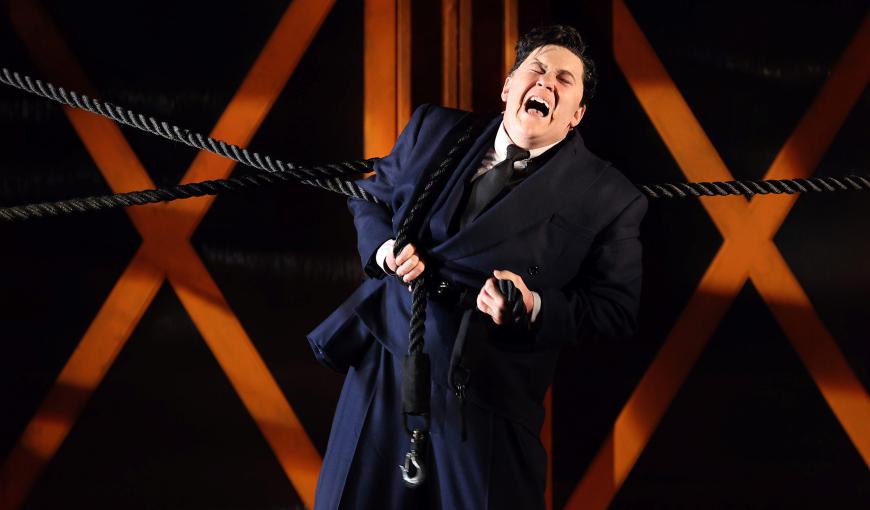
Van den Heever was a vivid and impassioned Senta, and Morris Robinson a jovial, casual Daland, whose inappropriate touching of other characters was in keeping with his view of his daughter. Chad Shelton was a superb Erik, with the kind of charisma and devotion to Senta that makes you wonder why she would choose the Dutchman over him. Bille Bruley, soon to be seen at San Francisco Opera as Steve Wozniak in The (R)evolution of Steve Jobs, was an adorable Steersman.
The Santa Fe Opera Chorus, under the direction of Susanne Sheston, sang magnificently, with force, beautiful tone, and perfect unity, in this and all of the operas I saw.
One of the big events this season was the world premiere of composer Nico Muhly’s orchestration of Monteverdi’s Orfeo for a small modern orchestra. In James Keller’s program notes, Muhly is quoted saying that “the reason to orchestrate Orfeo for a modern orchestra is so that it can actually be done.”
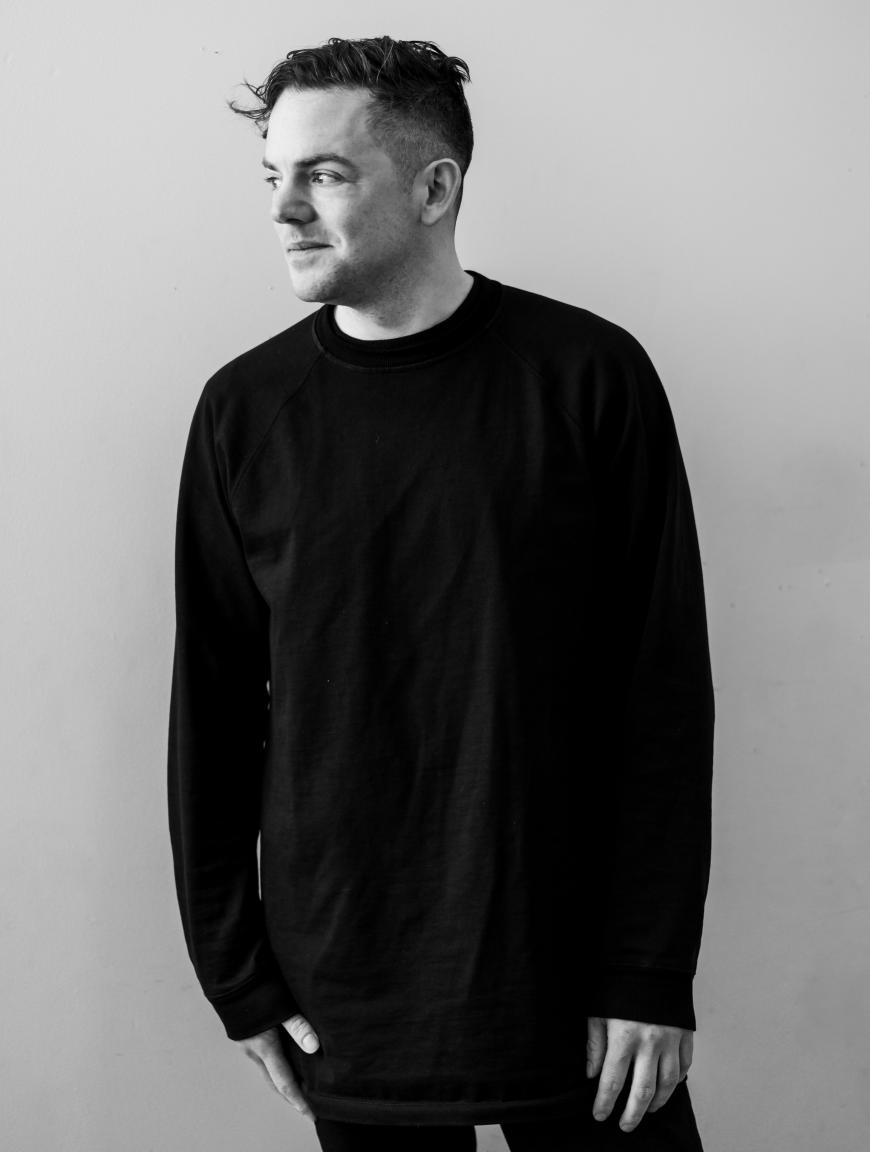
I take this to mean that Muhly believes a modern orchestration is required for Orfeo to be performed, which is both absurd and wrong. A search of OperaBase turned up about 40 runs of the opera worldwide between January 2017 and next August, which is not bad for a work that’s past its 400th birthday. As to Monteverdi’s other surviving operas, L’incoronazione di Poppea has a similar number of performances, and Il ritorno d’Ulisse in patria has somewhat fewer.
Other performances might use a period orchestra or one of the older modern orchestrations cited in Keller’s notes, but clearly Muhly’s orchestration isn’t necessary for these great works to be performed. We’ll find out sooner or later whether this new arrangement results in a flood of Orfeo performances.
The new orchestration was perfectly fine; it didn’t detract from the work, it included some novel sonorities, and it didn’t overwhelm the singers even though modern instruments are almost always louder than their 17th-century counterparts. (Brass will be brass, in any century.) The orchestration sounded like Monteverdi because Muhly followed the composer’s harmonies and musical structures.
But I was surprised to see that the singers were all wearing body microphones, given the comparatively small orchestra, their operatic training, and this generally singer-friendly opera house. I queried Santa Fe Opera and received this reply:
The sound design was called for in the score by Nico Muhly in collaboration with director Yuval Sharon with the goal of integration and continuity between three worlds: the live voice, processed voices with otherworldly effects, and voices that are either prerecorded or coming from offstage. The amplification was specific to the offstage performers and a prerecorded voice. The main thrust for the sound design was to achieve “otherworldly” vocal and reverberant effects placed in 3D surround space, above and around the audience, by sound designer Mark Grey.”
Composers called for, and opera houses created, all sorts of sound effects before the availability of microphones and amplification, so this requirement left me puzzled. But Grey is the best there is, and his sound design was so unobtrusive that it was only obviously in effect when amplifying the offstage voices.
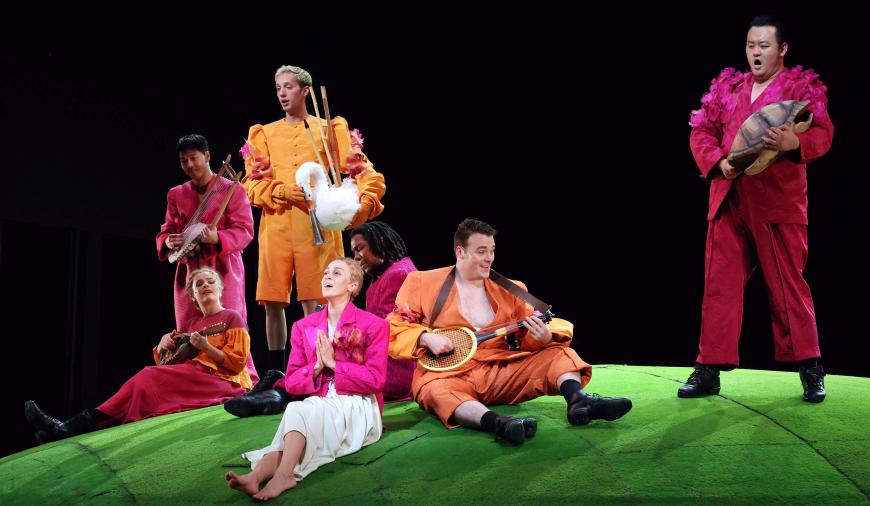
All that said, the new orchestration was the smallest factor in the success of the production. This was a magnificent Orfeo, led by Santa Fe Music Director Harry Bicket, whose crisp and varied conducting resulted in a cohesive and moving performance. Sharon’s imaginative production, with “visual environment” by Alex Schweder and Matthew Johnson, put the worldly action mostly atop a field shaped like a giant green mushroom cap. When Hades opened up for Acts 3 and 4, the cap rose up to reveal a dark maw beneath its verdant greenery.
Surgery on tenor Rolando Villazón’s vocal cords in 2009 resulted in a vocal crisis, and since then, Villazón, who seemed fated to be a great Romantic opera star, has reinvented himself as a director and singer of unusual repertory. His account of the title role was a triumph, beautifully and musically sung, passionately acted, and with no signs of his past issues.
Orfeo has by far the longest and most complex role in the opera, thoroughly dominating the stage for the work’s 115 minutes, but all of the singers equaled Villazón: Lauren Snouffer as La Musica and Speranza (Hope), Amber Norelai as Euridice, Paula Murrihy as La Messaggera (the Messenger), James Creswell as Caronte (Charon, the ferryman), Blake Denson as Plutone (Pluto), and Caitlin Aloia as Proserpina.
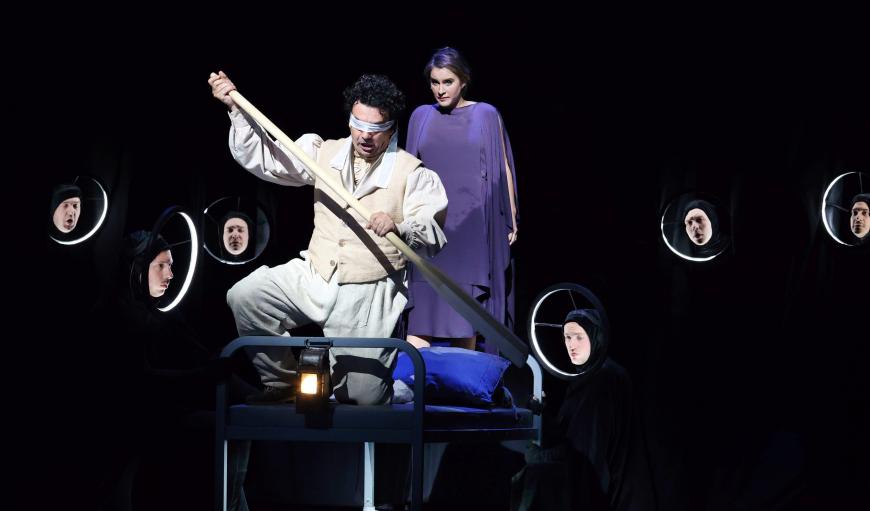
No choreographer is credited, so presumably the many dancelike elements of the staging were Sharon’s responsibility. Carlos J. Soto’s flowy costumes, with swaths of hot orange and pink, were reminiscent, in a good way, of the fashion designer Gudrun Sjödén’s clothing catalog and also of the costumes for El último sueño de Frida y Diego. And the black gowns of the chorus in the underworld scenes let the singers’ closely lit faces float spookily in the dark as if they were bodiless.
Alas, Bicket, so very right leading Orfeo, proved to be less than ideal in Pélleas et Mélisande, where his conducting came across as square and bar by bar in a work that needs a good feel for the flow of the French language and large-scale phrasing. Netia Jones’s staging started promisingly, with baritone Zachary Nelson’s Golaud keeping a cautious and respectful distance from mezzo-soprano Samantha Hankey’s Mélisande.
After that opening, though, Jones’s direction failed to illuminate this mysterious work and could be wildly off base. Pélleas, Mélisande, and Golaud all had body doubles who sometimes mirrored the singers’ actions — but why? The scenes with Mélisande, Golaud, and his sword, and Golaud’s killing of Pélleas, were undermined by the use of a knife rather than a sword. And when Mélisande is supposed to let down her glorious long hair, a hair extension dropped to the floor of the stage, eliciting audience laughter. Characters had intimate conversations with each other while standing far apart.
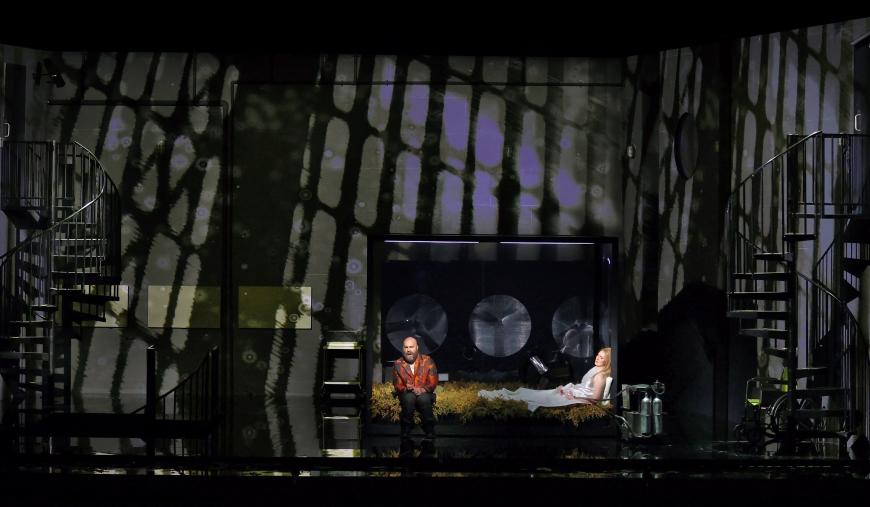
Jones’s stage design was overly cluttered, with a pair of spiral staircases diagonally across the stage from each other, a third staircase rising slightly from the floor, and a large glass case occupying much too much of the stage. When I first saw that last element, I thought, “Oh, that’s where the bed Mélisande dies in will be,” and indeed it was, but its overall meaning was not at all clear. Neither was the purpose of various electronic projections — of X-rays, molecules, and computer displays — that appeared at various places on the stage walls.
Hankey and baritone Huw Montague Rendall as Pelléas were excellent, eloquent and fluid as the maybe-lovers. Nelson lacked the glowering undertow of violence that the best Golauds have. Ben Brady was a good Arkel, and Emma Rose Sorenson likewise as Geneviève. Eleven-year-old Kai Edgar was a remarkably affecting Yniold, with real dramatic and vocal chops.
By contrast, David Pountney’s Rusalka production was a nearly unqualified success, a horror-story version of Dvořák’s fairy-tale story of a water nymph in love with a human, a relationship that destroys them both. Appropriately, I saw Rusalka on a chilly night, with intermittent rain and gusty winds blowing through the open-air opera house. It certainly added to the watery atmosphere of the work.
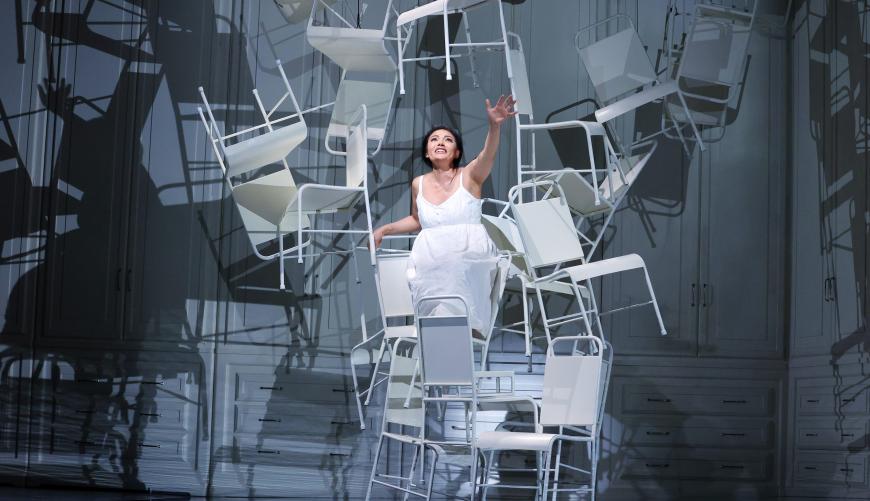
Conducted with both grace and romantic fervor by Lidiya Yankovskaya, the production marked Ailyn Pérez’s commanding debut in the title role. Pérez, onstage for nearly the entire opera, sang and acted heroically, her darkly beautiful soprano voice and refulgent high notes bringing the character vividly to life.
The production also called for Pérez to perform virtual acrobatics on a giant sculpture constructed of chairs while singing the opera’s signature aria, the “Song to the Moon”; if she was wearing a flying rig, I couldn’t spot it. I’m not at all sure what the chairs represented, but they made a striking and indelible stage picture.
The chairs were part of a generally clinical representation of the world of Vodník (Rusalka’s father) and the water nymphs. When the opera opens, the stage is lined with identical cabinets, broken only by a corridor leading to the rear through which some entries are made. Vodník, played with flirtatious gusto by the wonderful bass James Creswell, is a wheelchair user and sometimes pushed around by white-clad attendants. There’s a shallow pool on the right side of the stage.
To advance her desire for the Prince, the man she’s in love with, Rusalka pays a visit to the witch Ježibaba, hoping for a solution to her problems. Ježibaba, a terrifying and riveting presence as sung by mezzo-soprano Raehann Bryce-Davis, emerges from one of the cabinets and chats with Rusalka. Yes, she can help, but there’s a price: Rusalka’s voice.
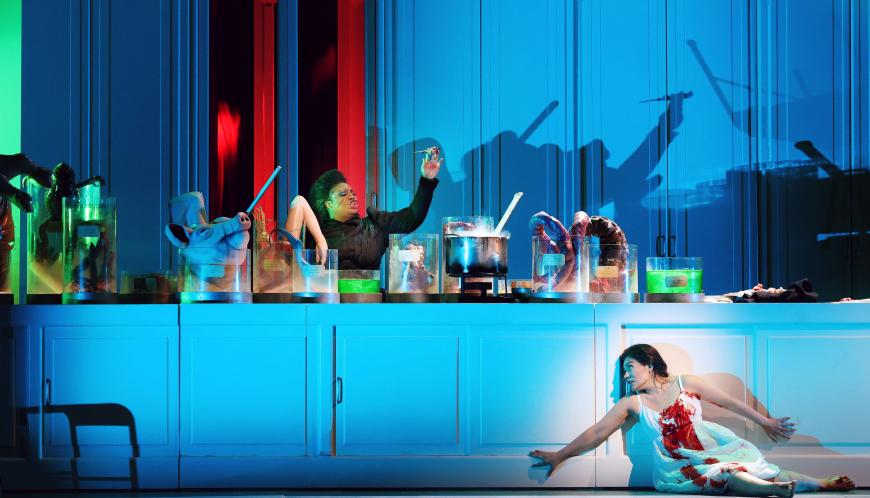
Rusalka agrees, and this is where the horror begins in earnest. The witch hauls a laboratory out of a cabinet, and on the lab’s worktop are jars full of body parts, some porcine, some human. She pulls out sharp scissors, and before you know it, Rusalka is laid out on the worktop covered in blood. Ježibaba looms over Rusalka, utterly dominating her and sometimes leading her around by an ear.
Act 2, set in the Prince’s castle before his and Rusalka’s marriage, continues the horror, both physical and psychological. Rusalka can’t speak to him or the other guests, and the Foreign Princess is trying to lure the Prince away from her. Meanwhile, women with the heads of deer are trapped in glass cases, reacting to what they’re seeing. Among the guests at the wedding ball are men with antlers on their heads; the female guests’ outfits are all in animal-print fabric. Wielding a riding crop, the Foreign Princess, dressed in red and almost the only bright spot anywhere, forces the Prince onto the stage and straddles him. Rusalka herself winds up in a glass case before fleeing.
This act also brings the only real humor in the opera, when the Gamekeeper and Kitchen Girl are preparing the wedding feast. Jordan Loyd and Tessa Fackelmann made a hilarious pair a la Raggedy Andy and Raggedy Ann and also sang gorgeously.
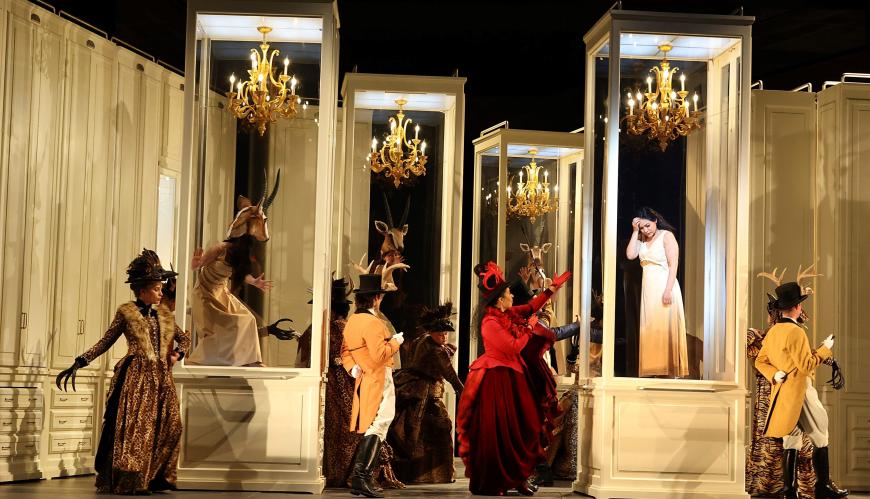
The Foreign Princess’s entry from one of the side cabinets, mounted on a statue of a horse, was just about the only thing in this production that came off as tired, perhaps because two SF Opera productions, the new Madama Butterfly and older Luisa Miller, have used the same device. Soprano Mary Elizabeth Williams wore that red dress well and acted up a storm, but vocally she was a disappointment, with a soft-grained middle range and tiny high notes disconnected from the rest of her voice. Like Williams, Robert Watson acted the role of the Prince with heartfelt fervor, by turns confused and amorous, in a pleasant tenor that didn’t have a lot of character.
In Act 3, everything falls apart; the mad Prince follows Rusalka back to the lake and dies in her arms, and the set, too, is in disrepair. The cabinets are coming apart; the glass cases are askew and contain human torsos. Three nymphs, seen at the beginning and end of the opera, flirt with Vodník, whom we now see is perhaps a drug addict.
All in all, it’s a marvel of a production between Pérez’s bravura performance, Pountney’s direction, Yankovskaya’s conducting, and the fabulous scenic designs of Leslie Travers.


